Last week Breaking the Cycle Consulting Services (BCCS) screened The Birth of a Nation with over 500 high school students in New York and Washington DC. BCCS is a consulting company I co-founded with my husband several years ago to work with educators, parents, students and agencies to break the cycle of academic and social underdevelopment in communities of color. We’ve been doing this work for years now and it was absolutely amazing to see how many of these students and their teachers were impacted by what they experienced in the theater and many of the discussions we had afterwards.
As they watched the film, it was clear that the students were seeing images of themselves on screen that Black children rarely, if ever, see. Instead of the typical way enslaved people are show being resilient in the face of racial oppression, The Birth of a Nation shows Black people actively grappling with how best to resist racial oppression. In the discussions we had afterwards, many of the students said they felt like The Birth of a Nation showed them that not much has changed from slavery until now and many of the same things that enslaved Africans were fighting for on screen are the same issues #BlackLivesMatter is fighting for now.
This connection matters more than most realize.
Racism and Slavery in School
We rarely talk about race or slavery in school, even though many educators and parents know that exposing Black children to their history and culture in school is one of the best and most important steps one can take to combat the negative impact racism has on the achievement gap. Yet, outside of a few exceptions, teaching Black history and culture in school is almost never done in any systematic way. Sadly, even if they were taught in the average classroom, many Black students have been taught to be so ashamed of slavery, that they want little to do with Black history and nearly nothing to do with Africa (which many of us have been trained to see as the “Dark Continent”).
This usually means that while race and the legacy of slavery are the two largest elephants in any given classroom, neither our educators nor our students are being equipped with the ability to analyze the impact of these phenomenon. Let alone learn how to use the education system to figure out how to solve the problems caused by them.
When compared to their White counterparts, by most measures and with few exceptions, a significant portion of Black children in American schools are performing at dismal rates academically. According to the National Center for Education Statistics, only 68% of Black students graduate on time. Black students make up the fastest growing group of children filling jail cells. They are suspended and expelled three times as often as White children, are subjected to harsher scrutiny and suffer from lower expectations from both teachers and authority figures.
Equally as significant, are the other systematic factors that follow Black students like an ever-present shadow. Black children (regardless of social class) also battle with what Dr. Joy DeGruy calls racist socialization: the adoption of a white supremacist value system which has its roots in race-based slavery. At this value system’s foundation is the belief that white, and all things associated with whiteness (including things like intelligence and beauty), are superior; and that black and all things associated with blackness (including ignorance, ugliness and bad behavior), are inferior. The Doll Test provides us an example of racist socialization in action.
As noted by educator, consultant and author Gary Howard, “It is no mere coincidence that the children of certain racial, cultural, linguistic and economic groups—those who have been marginalized by the force of Western White domination—are the same students who are now failing or underachieving at disproportionate rates in our nation’s schools.”
The Birth of a Nation in Schools Today
When we were preparing for the roll out of The Birth of a Nation as an educational tool, we knew that we would have to contend with all of this history and background if we were going to be able to successfully use the film to empower Black students and the educators who love them.
Our first step was to prepare the teachers.
Study after study shows that racial dynamics shape classroom realities. This is true whether we are talking about graduation rates expulsion rates AP classroom acceptance rates, test scores, teacher expectations you name it. Issues of race in the classroom are why Black children are suspended more often and more harshly than their White counterparts. Racism is one of the main reasons why Black girls and Black boys are the primary passengers on the trains driving up and down the school to prison pipeline. The inability to effectively navigate issues of race in school is why those disparities start as early as preschool. Despite this fact most teachers never take a single course in how to address issues of race in the classroom.
As poignantly asked by Gary Howard: “How is it possible, with so much research and information available about multicultural issues today, that prospective educators can complete their entire teacher education and certification program without gaining a deeper grasp of social reality?”
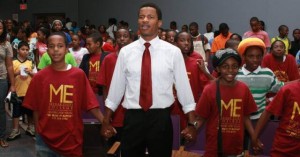
Nate Parker & youth at the kick off of the Leadership & Literacy through Debate program in Brooklyn, NY. This curriculum was designed by Parker and BCCS Co-Founder Brian Favors and was based on the film The Great Debaters.
Step 1: Prepare the Educators
This reality is one of the main reasons why we partnered with the Nate Parker Foundation and expanded our professional development programs to include workshops and materials on Teaching Nat Turner in schools. (If you’re interested in learning more about the next Teaching Nat Turner webinar, sign up here).
For each of our schools, we provide educators with a webinar or workshop to prepare them to watch the film with their students and to deal with issues of race and culture in the classroom. The Teaching Nat Turner professional development program serves as an educational tool to complement the motion picture The Birth of a Nation. The program confronts the issues of slavery, racism, and social justice in education. Most importantly, it prepares educators (and parents) to engage in the critical racial dialogue that is often neglected in the classroom and helps to minimize the discomfort that comes from lack of information.
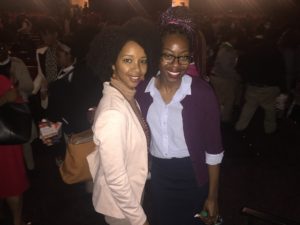
AfroStateOfMind with one of the many brilliant educators working in DC at Friendship Charter Schools!
Participants in the workshop review the screening guide created for the program which includes pre and post-screening questions and activities along with links to additional videos and resources. Participants are also introduced to the book The Birth of a Nation: Nat Turner and the Making of a Movement, as a school and family resource that educators and parents can use along with the film to learn more about the reality in which Nat Turner grew up, his history and legacy, the role of race and slavery in the law and the history of resistance. Most importantly, readers can also explore Turner’s relevance to contemporary dialogues on race relations. The book includes beautiful images and timelines that illustrate the all-consuming impact of race and slavery on American life today.
These and other resources (including the National Geographic documentary Rise Up: The Legacy of Nat Turner, which takes viewers on a journey through the town where Nat Turner lived, fought and died) are used to prepare the educators and parents to work with their students before during and after the screening of the film.
Once the educators were prepared, we then got to focus on the students. That’s where the magic happens.
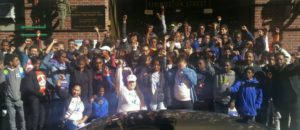
Brooklyn High School Students after the screening of The Birth of a Nation (it’s fuzzy – but you get the idea!)
Step 2: Recognize that Black Children Are Magic
No matter how much I enjoy working with educators on issues of race and culture in the classroom, working with the students is usually one of the most powerful parts of the process. The film clip below shows one pre-screening session where BCCS co-founder Brian Favors and Jean McGianni Celestin, co-writer of The Birth of a Nation prepare the students to see the movie.
If you don’t know this yet, you should be aware that Black children are brilliant. After screening the film and doing some of the post screening exercises here’s what some of them had to say. It was amazing to see them making connections between what they saw on the screen while watching The Birth of a Nation and the realities that they’re living today. Below you’ll see a few clips of what they had to say after they saw the film.
Another student had this to say about Nat Turner, freedom and the willingness to read.
And some of the high school students in Washington DC had this to say after they saw the film.
The Birth of a Nation: A Powerful Education Tool Specifically Designed with Black Kids in Mind
Regardless of what you may think about the controversy that swirled around this film before its release, the reality is The Birth of a Nation is one of the few pieces of broadly distributed media specifically designed with Black youth in mind. As he notes in his book, film co-writer and director Nate Parker made The Birth of a Nation because he “wanted to present the story of a hero” for young people. “[Parker] was less interested in the ‘typical’ slave narrative, which hinges upon rampant victimization where the enslaved have little recourse. Instead, [he] wanted a story in which the hero clearly sees resistance as an option to overcoming his oppression.”
Black children need Black heroes that speak to their specific reality. They need access to resources and educators who know how to bring that information into the classroom to empower them to succeed. Considering the vast amount of issues the Black community is facing today, we need Black students who are able to use their education to specifically address our condition. Empowering them with materials like these are just the first of many steps we need to take in order to prepare them for the realities that they face—and to create the solutions we so desperately need.
***********************
Looking for more thoughts from an Afro State of Mind? Check out my book Afro State of Mind: Memories of a Nappy Headed Black Girl now available here for e-book download! And if you want to stay connected follow me on Twitter, or Instagram “like” Afro State of Mind on Facebook or catch up on my latest Youtube videos! Opinions are those of AfroStateOfMind(tm) only and do not represent those of any other institution.
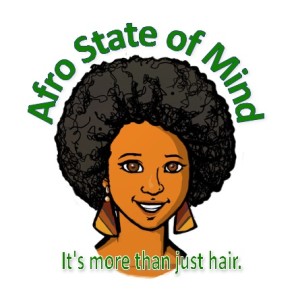
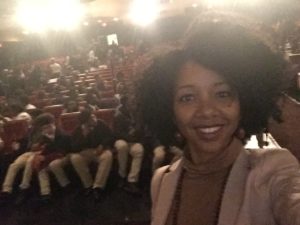
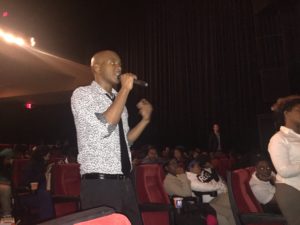
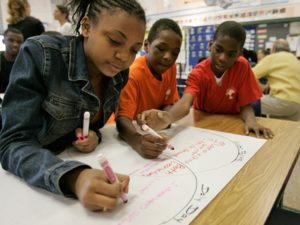
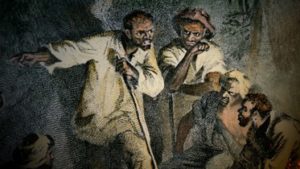
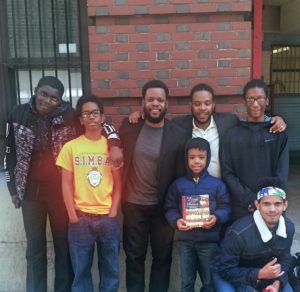


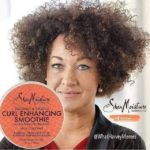
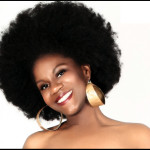
Speak Your Mind